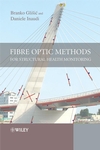 The Economist reports about smart bridges and the SHM system that was installed by Roctest and SMARTEC on the I35W bidge in Minneapolis.
The Economist reports about smart bridges and the SHM system that was installed by Roctest and SMARTEC on the I35W bidge in Minneapolis. Here are some interesting parts:
When an eight-lane steel-truss-arch bridge across the Mississippi River in Minneapolis collapsed during the evening rush hour on August 1st 2007, 13 people were killed and 145 were injured. There had been no warning. The bridge was 40 years old but had a life expectancy of 50 years. The central span suddenly gave way after the gusset plates that connected the steel beams buckled and fractured, dropping the bridge into the river.In the wake of the catastrophe, there were calls to harness technology to avoid similar mishaps. The St Anthony Falls bridge, which opened on September 18th 2008 and replaces the collapsed structure, should do just that. It has an embedded early-warning system made of hundreds of sensors. They include wire and fibre-optic strain and displacement gauges, accelerometers, potentiometers and corrosion sensors that have been built into the span to monitor it for structural weaknesses, such as corroded concrete and overly strained joints.Some civil engineers are sceptical about whether such instrumentation is warranted. Emin Aktan, director of the Intelligent Infrastructure and Transport Safety Institute at Drexel University in Philadelphia, points out that although the sensors generate a huge amount of data, civil engineers simply do not know what happened in the weeks and days before a given bridge failed. It will take a couple of decades to arrive at a point when bridge operators can use such data intelligently.
The last part is quite pessimistic. While more research is certainly needed in the field of data analysis, there is a lot of useful information that can be obtained today from a monitoring system such as the one installed on the I35 Bridge.




No comments:
Post a Comment